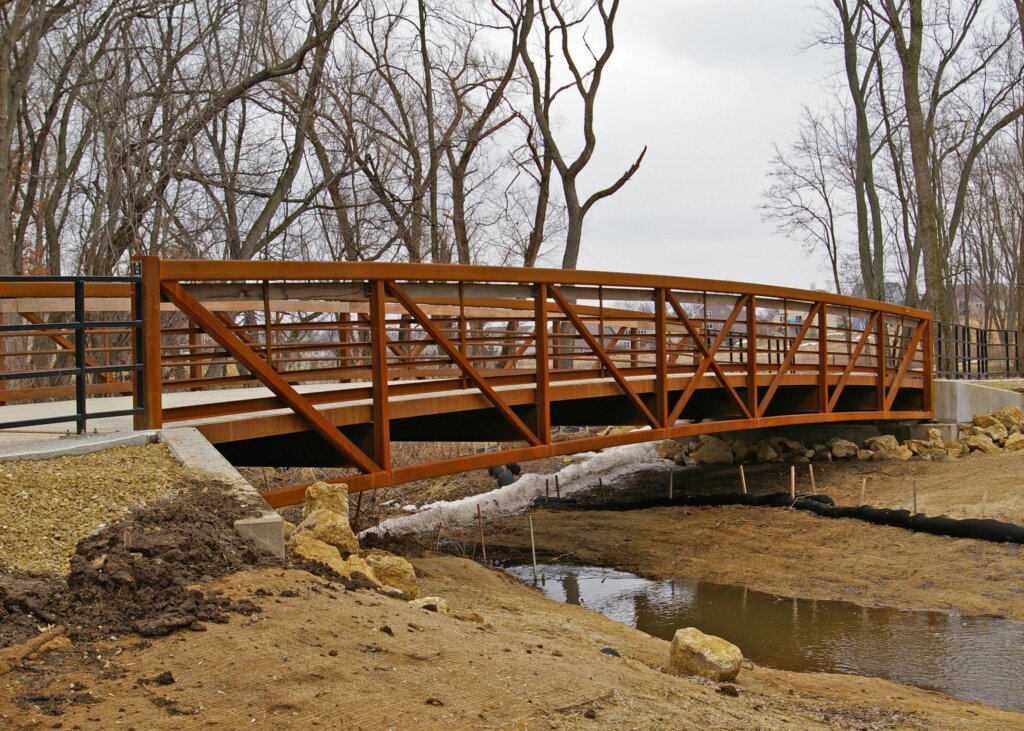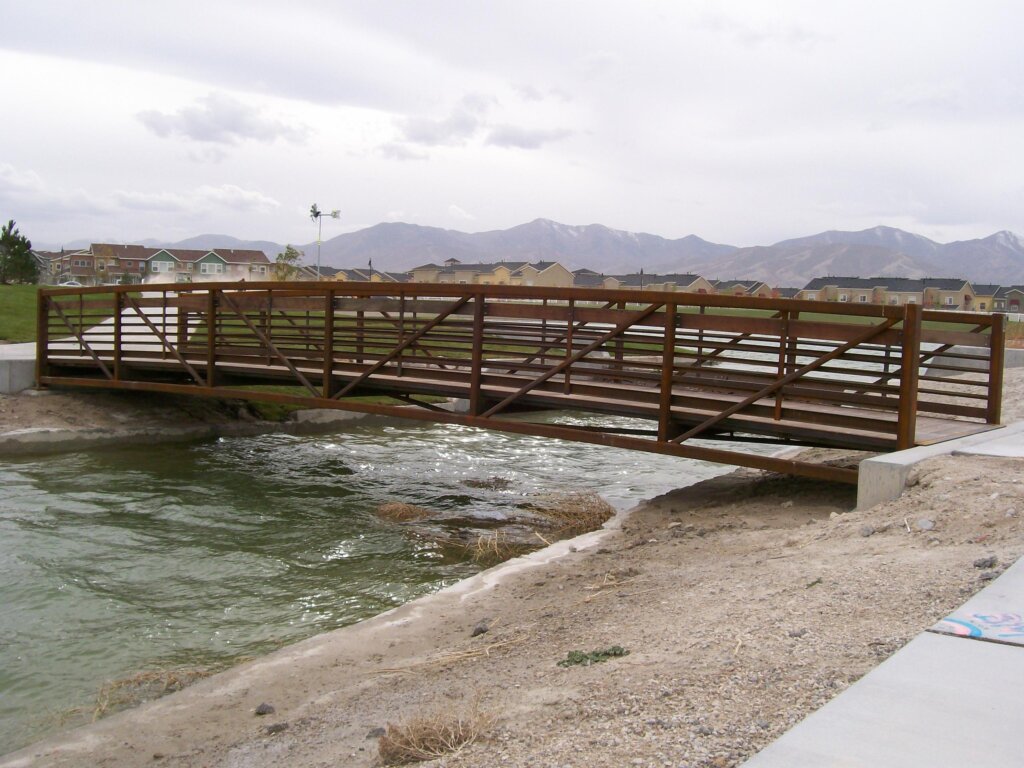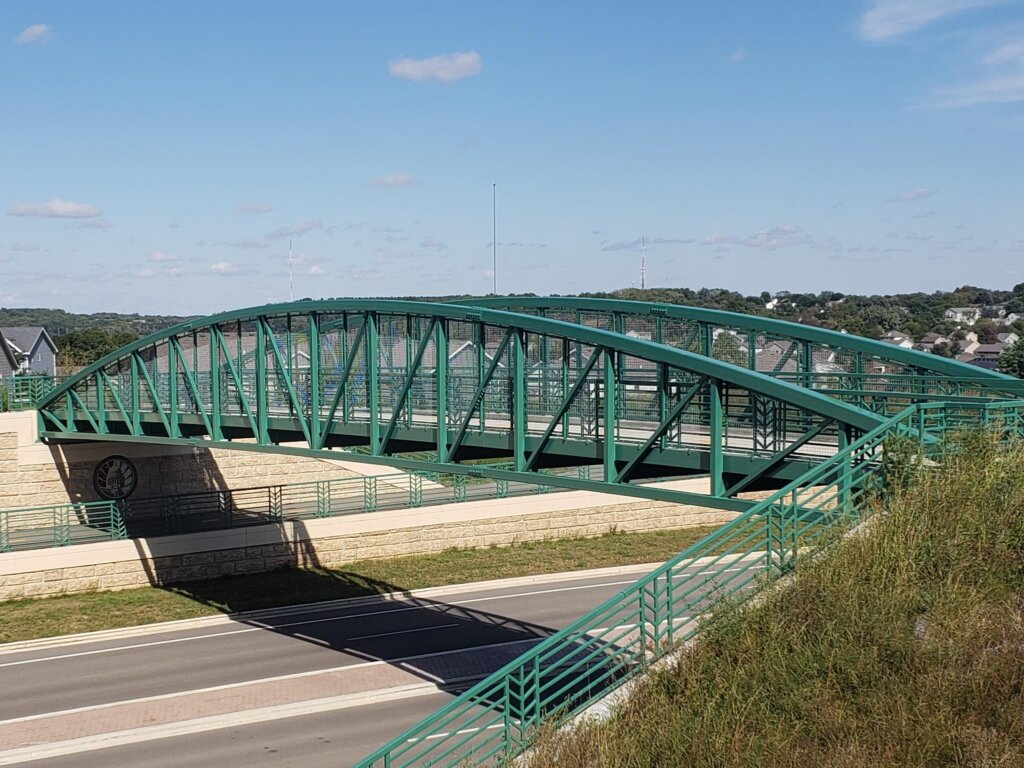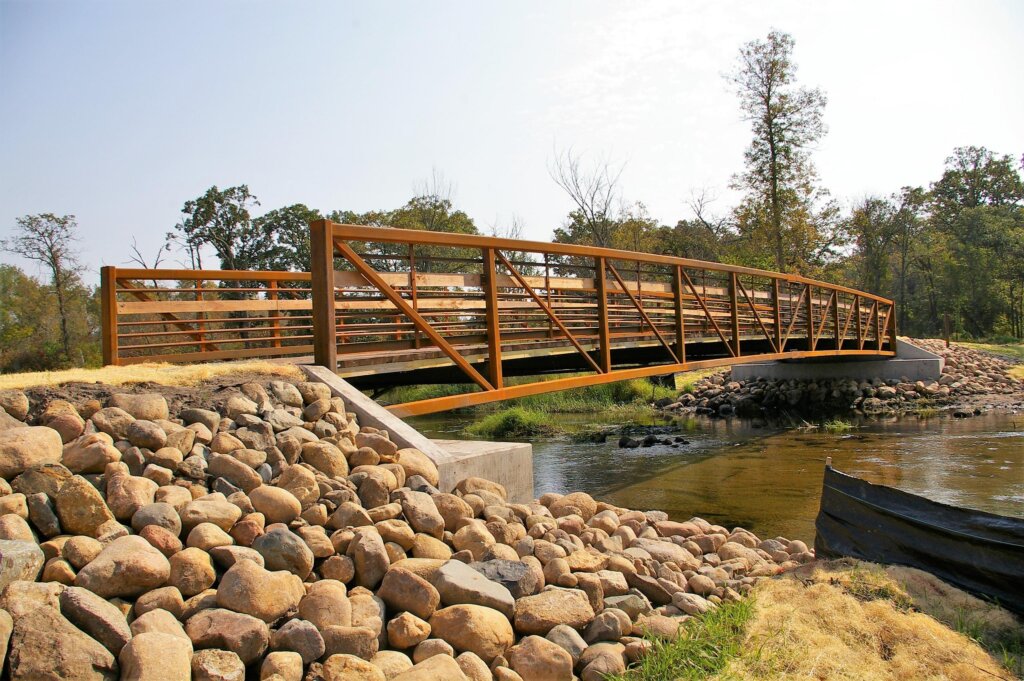Steel Finish
Most steel recreation bridges start with weathering steel. Paint can be added when required by application. At Wheeler, we can help you decide which option is the best for your project.


Weathering Steel
Atmospheric Corrosion Resistant Self-Weathering Steel is a special formulation that develops a protective oxide patina. Under acceptable atmospheric conditions, the steel “rusts” to a patina, eventually stabilizing and protecting the steel from further corrosion. Color of the patina will progress from reddish to dark brown. The finish will release dust as the patina forms.
Weathering steel provides an economical choice with a rustic appearance and relatively little maintenance. The bridge will never require recoating and can be blasted to remove graffiti. It will simply rust again in the affected area.
Precautions with weathering steel include rust staining in runoff areas below the bridge and avoiding salt latent atmospheres (coastal areas or bridges over highways requiring winter maintenance).
Paint
For applications where weathering steel is not suitable, a painted finish can be added. Two and three-coat paint systems typically used in highway applications are available in virtually any color.
Painted bridges are more expensive due to the cost of materials and application. More extensive sandblasting and additional sealing of accessory connections are required.


Down to the Very Last Detail
Wheeler can walk you through the important choices for completing your steel recreation bridge. Click on these links for more details:
